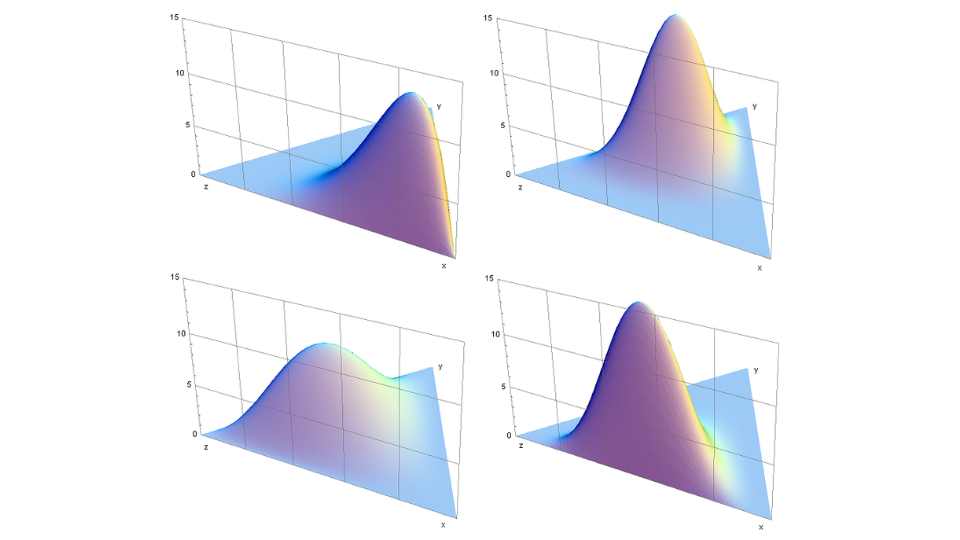What is fuzzy name matching? A fuzzy name matching algorithm, or approximate name matching, is a technique used to compare and match names with slight differences, variations, or errors. It is...


What is fuzzy name matching? A fuzzy name matching algorithm, or approximate name matching, is a technique used to compare and match names with slight differences, variations, or errors. It is...

Graph Neural Network (GNN) is revolutionizing the field of machine learning by enabling effective modelling and analysis of structured data. Originally designed for graph-based data, GNNs have found...

What is few-shot learning? Few-shot learning is a machine learning technique that aims to train models to learn new tasks or recognise new classes of objects using only a small amount of labelled...

Why Combine Numerical Features And Text Features? Combining numerical and text features in machine learning models has become increasingly important in various applications, particularly natural...

L1 and L2 regularization are techniques commonly used in machine learning and statistical modelling to prevent overfitting and improve the generalization ability of a model. They are regularization...

What is hyperparameter tuning in machine learning? Hyperparameter tuning is critical to machine learning and deep learning model development. Machine learning algorithms typically have specific...

What is CountVectorizer in NLP? CountVectorizer is a text preprocessing technique commonly used in natural language processing (NLP) tasks for converting a collection of text documents into a...

The F1 score formula The F1 score is a metric commonly used to evaluate the performance of binary classification models. It is a measure of a model's accuracy, and it takes into account both...

Latent Dirichlet Allocation explained Latent Dirichlet Allocation (LDA) is a statistical model used for topic modelling in natural language processing. It is a generative probabilistic model that...

What is GPT-3? GPT-3 (Generative Pre-trained Transformer 3) is a state-of-the-art language model developed by OpenAI, a leading artificial intelligence research organization. GPT-3 is a deep neural...
![How To Guide To Bias-Variance Trade-Off [2 Examples In Python: Polynomial Regression & SVM]](https://i0.wp.com/spotintelligence.com/wp-content/uploads/2023/04/bias-varince-trade-off.jpg?fit=960%2C540&ssl=1)
What are bias, variance and the bias-variance trade-off? The bias-variance trade-off is a fundamental concept in supervised machine learning that refers to the trade-off between the error due to...

In natural language processing, n-grams are a contiguous sequence of n items from a given sample of text or speech. These items can be characters, words, or other units of text, and they are used to...
![How To Implement Natural Language Processing (NLP) Feature Engineering In Python [8 Techniques]](https://i0.wp.com/spotintelligence.com/wp-content/uploads/2023/03/nlp-feature-engineering.jpg?fit=1200%2C675&ssl=1)
Natural Language Processing (NLP) feature engineering involves transforming raw textual data into numerical features that can be input into machine learning models. Feature engineering is a crucial...
![How To Implement Data Augmentation In Python [Image & Text (NLP)]](https://i0.wp.com/spotintelligence.com/wp-content/uploads/2023/03/Ontwerp-zonder-titel-46-1-2-scaled.webp?fit=600%2C338&ssl=1)
Top 7 ways of implementing data augmentation for both images and text. With the top 3 libraries in Python to use for image processing and NLP. What is data augmentation? Data augmentation is a...

Autoencoder variations explained, common applications and their use in NLP, how to use them for anomaly detection and Python implementation in TensorFlow What is an autoencoder? An autoencoder is a...
![Adam Optimizer Explained & How To Use In Python [Keras, PyTorch & TensorFlow]](https://i0.wp.com/spotintelligence.com/wp-content/uploads/2023/03/adam-optimizer.jpg?fit=960%2C540&ssl=1)
Explanation, advantages, disadvantages and alternatives of Adam optimizer with implementation examples in Keras, PyTorch & TensorFlow What is the Adam optimizer? The Adam optimizer is a popular...
![What Is Overfitting & Underfitting [How To Detect & Overcome In Python]](https://i0.wp.com/spotintelligence.com/wp-content/uploads/2023/02/overfitting-underfitting.jpg?fit=960%2C540&ssl=1)
Illustrated examples of overfitting and underfitting, as well as how to detect & overcome them Overfitting and underfitting are two common problems in machine learning where the model becomes...

Why is backpropagation important in neural networks? How does it work, how is it calculated, and where is it used? With a Python tutorial in Keras. Introduction to backpropagation in Machine...

Get a FREE PDF with expert predictions for 2025. How will natural language processing (NLP) impact businesses? What can we expect from the state-of-the-art models?
Find out this and more by subscribing* to our NLP newsletter.